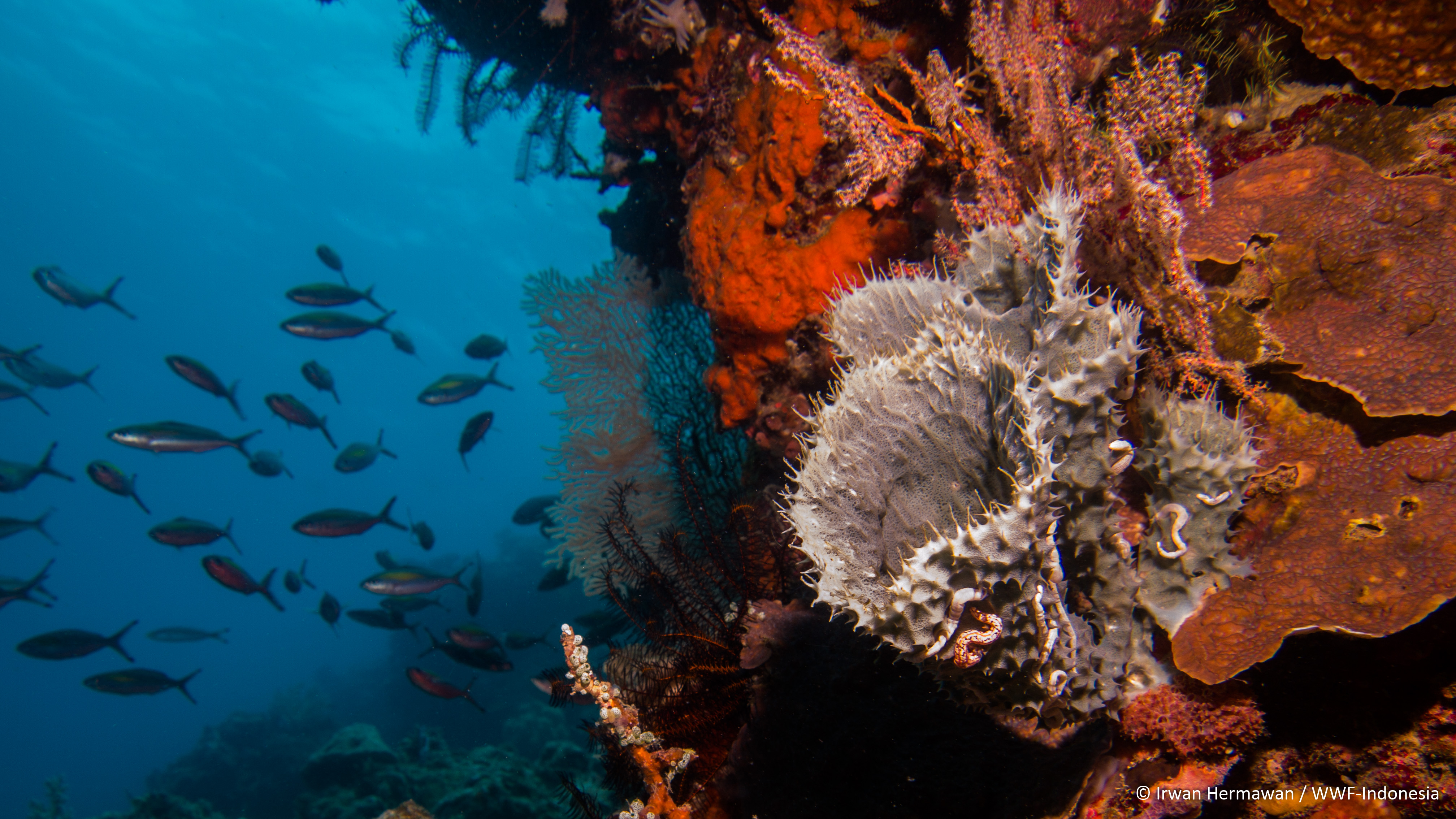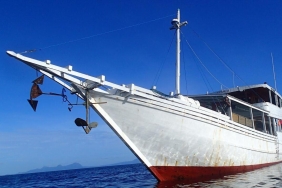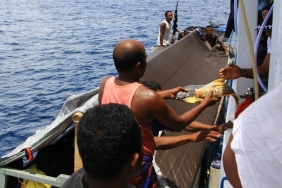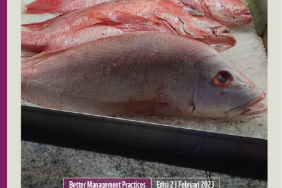DAY 8 : A BRIEF NOTE ABOUT DIVING IN ALOR
On a trip along the coastal areas of Alor Island and East Flores with the aim of knowing the effectiveness of management after the establishment of MPA zoning in the Alor Regency area, at the beginning of the first week we (the team) chose several locations or samples in several areas in Alor Regency. On the way along the coast of Alor there are many interesting things that can be told such as my (team) encounters with marine mammals (dolphins), recorded in the first week of our journey we encountered encounters with marine mammals (dolphins) as many as 3-4 times.
This ecological survey activity was carried out using the point intercept transect (PIT) and belt transect methods to determine the condition of the water bottom substrate cover and the abundance and biomass of several target fish species carried out at two depths, namely shallow and deep (3 meters and 10 meters).
Based on observations by the team at several points in Alor Regency, there were quite a few types of soft coral (soft coral) with Sarcophyton and Xenia species covering the bottom substrate. Coral damage caused by bombing activities was also encountered, which is unfortunate considering the condition of damaged coral reefs takes a long time to recover and return to good condition, while for target fish species, many species from the reef fish family Caesionidae (Fussiler) Pterocaesio tile, Caesio lunaris and Caesio teres were found.
This type of reef fish generally has a grouping nature and forms schooling in the water column. This is related to the fish's diet which seeks plankton in the water column. Some charismatic biota were also found during the observations by the team such as two species of black tip shark (Carccharinus melanopterus) and white tip (Triaenodon obesus) as well as a species of napoleon fish (Cheilinus undulatus). Some of the challenges and difficulties experienced by the team while in the field are generally related to the condition of Alor waters which have strong currents and waves at several research station locations, so a level of vigilance and caution is needed when collecting data on coral reef ecosystems.
As part of a network of marine protected areas, Solor Alor waters hold considerable potential for coral reef ecosystems. Conservation efforts such as data collection activities regarding the condition of coral reef ecosystems are very necessary, as well as several activities that increase public awareness of the importance of maintaining and utilizing an ecosystem in a sustainable and sustainable manner.





